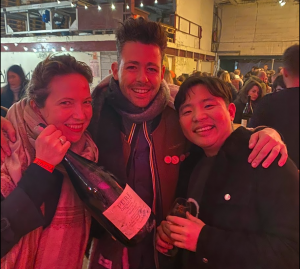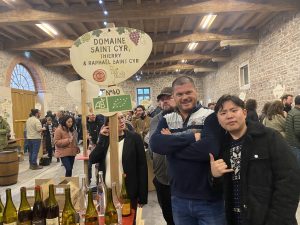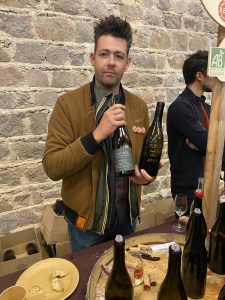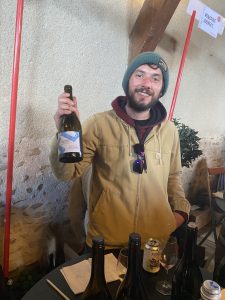2022 Vintage Report from BBB (Bien Boire en Beaujolais) Salon
The Paris Wine Co. team is just coming back from the “BBB” (Bien Boire en Beaujolais) series of wine shows—notably the “Beaujoloise” and “Biojolaise” salons where many of our favorite masters of Gamay were gathered. We had an opportunity to chat and visit with some winemakers who offered some insights on the 2022 vintage.

In most areas of Beaujolais, 2022 offered a generous harvest compared to the past few years. Although the overall yields were higher, the vintage came with complicated vinifications. Many grapes were damaged from late hail in the season, and ample dryness led to abundant skins and seeds with little liquid to help fermentations, as well as high pH. (For example, Yann Bertrand notes that he had 33 to 34 hectoliters in Fleurie and Morgon, whereas without hail, he would’ve had between 45 and 48.)

It was interesting—and more importantly, very assuring—to see different ways that our winemakers are adapting to continue with their styles intuitively. Yann, for instance, did a semi-carbonic for the first time, with the exception of Beaujolais Langitiné, which went through a strict carbonic maceration (his Langtinié fruit comes from very high altitudes and is planted with young vines that give generously / vigorously). For other cuvées, he did a direct press for 30% of the harvest along with semi-carbonic, which allowed the juice to ferment well. Yann is very happy with how his vinifications went, and his wines were tasting great (there was no SO2 added thus far when we tasted them).

Depending on the vintage, Yann may change the proportion of elevage in oak barrel vs. tank. In 2019, a large amount of rain fell before harvest, so he chose to age all of his wines in oak barrels, so as to give them more structure; in 2020, he chose to age about 50% in barrel, as the wines were high in alcohol and very structured. In 2021, the ratio was 70/30 barrel and tank. In 2022, the élevage was much more cuvée-specific. For example, 30% in tank for Julienas and Saint-Amour, 30% in concrete tanks for Chaos, 100% in steel for Fleurie Mon Petit Chérie, ⅔ in tank and ⅓ in barrel for Beaujolais.

Another interesting example of vinification adaptation could be seen chez Justin Dutraive, as he decided to harvest early on his high-altitude wines to avoid the above problem of dryness, as well as implemented a carbo sèche technique, which consists of strict carbonic maceration, but the winemaker removes the juice from the concrete tanks each morning and night, so as to make sure that all of the fermentations are truly taking place inside the berries; he’s only one of two winemakers doing so in the Beaujolais. The resulting wines offered punchy fruit flavors and a long-lasting first nose, both of which offered structure to the final wine; one of the standouts of our tasting at BBB.
By Ryan Lim (Edited by Vicki Denig)



